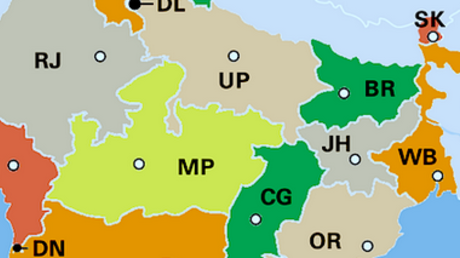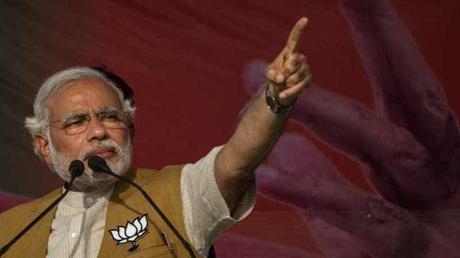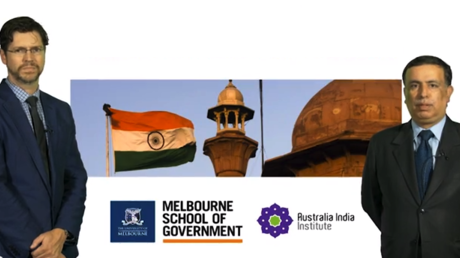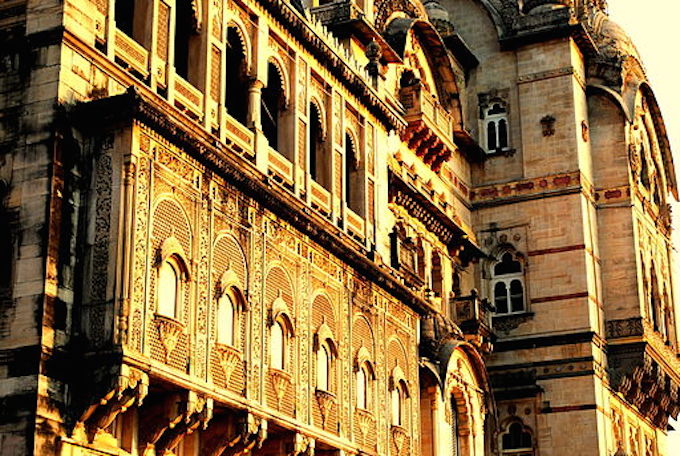Eighty-nine constituencies in seven Indian states will vote today, April 30, in the seventh round of polling in India’s marathon nine-phase parliamentary election.
Close to half these seats – 26 in Gujarat and 13 in Punjab – are in states that see a broadly bipolar contest between the ruling Congress Party and the Bharatiya Janata (BJP)-led opposition alliance. In other states, such as West Bengal (nine of its 42 seats vote on April 30), Uttar Pradesh (14 of 80 seats) and the new state of Telangana (17 seats; Telangana has recently been carved out of the old state of Andhra Pradesh), the presence of strong regional parties makes the contest more varied.
Of these big states, the only one where the Congress is confident of a good performance is Punjab. In 2009, it won eight of Punjab’s 13 seats. Can it realistically hope to improve its numbers this campaign?
Telangana voted heavily in favour of the Congress in 2009 – the party won 33 of undivided Andhra Pradesh’s 42 seats – but is less certain territory for the Congress this time. The battle seems to be between the Telangana Rashtra Samiti, a local party that campaigned for a separate state, and a weakened Congress.
The most riveting contest today could well be the one in Amritsar (Punjab), where Arun Jaitley of the BJP takes on Amarinder Singh of the Congress. This is a battle between two formidable politicians.
In Uttar Pradesh and West Bengal, the Congress is severely debilitated. In West Bengal, the Trinamool Congress – a regional party that runs the state government – is expected to win big.
The Congress fear is not just a poor show. It is that for the first time in Indian political history, even the BJP’s vote share in West Bengal may exceed the Congress’. Should that happen, it would be a defining moment in a state where the BJP, before this election at least, was an also-ran.
Uttar Pradesh was once a polity dominated by the Congress but from the early 1990s, the party began to decline. It made an impressive comeback of sorts in the 2009 parliamentary election, when it won 21 of 80 seats. Six of those 21 seats were part of the 14 central Uttar Pradesh constituencies that vote on April 30. As such, this is a very important day for the Congress.
One of those central Uttar Pradesh seats that the Congress won in 2009 – and has won in every election since 1952, with the exception of 1977 – was Rae Bareli. This is the constituency of party president Sonia Gandhi and she is expected to retain it comfortably. Coincidentally the BJP president, Rajnath Singh, will also have his fate decided today, when polling stations open in Lucknow.
Sonia Gandhi and Rajnath Singh are not the only high-profile candidates whose seats are in contention today. The BJP’s Narendra Modi, widely tipped to be India’s next Prime Minister, is attempting to become the MP from Vadodara, in Gujarat. As the Indian system allows, he is also contesting from Varanasi (Uttar Pradesh), where voting takes place on May 12. L.K. Advani, India’s former deputy prime minister and the BJP’s most senior leader in terms of age, is seeking election from Gandhinagar, the capital of Gujarat.
But the most riveting contest of April 30 could well be the one in Amritsar (Punjab), where Arun Jaitley of the BJP takes on Amarinder Singh of the Congress. This is a battle between two formidable politicians.
Jaitley is India’s former commerce minister and being mentioned as a possible finance minister should the BJP come to office. One of India’s leading lawyers, he is an articulate politician and an election strategist of some renown. However, this is Jaitley’s first direct election. So far he has made it to only the Upper House of parliament, the electors for which are state-level legislators.
Ranged against him is Amarinder Singh, son of the former maharaja of Patiala and till 2007 chief minister of Punjab. For Singh, who led the Congress to defeat in the Punjab state election of 2012, is looking to redeem himself in Amritsar. Should he win, it would revive what was appearing to be a fading political career. Amritsar holds hope for the Congress because the BJP had won in 2009 by just 6,800 votes.
Jaitley’s optimism stems from three sources. First, the rural segments of Amritsar constituency are a stronghold of the Akali Dal. Long an ally of the BJP, the Akali Dal is a state party with a robust presence among the Sikh peasantry.
Second, while the urban areas of Amritsar do pose a challenge for the BJP, Narendra Modi’s pan-Indian appeal, and public meeting in the city on April 25, could have had a decisive impact.
Third, and this may be the most important, Jaitley and his family members, including his wife and daughter, have stayed put in Amritsar for a month, going virtually from door to door, persuading individual after individual. It has been very rigorous, old-fashioned canvassing.
In a sense, this is the beauty of an election. A politician who has made a name for himself as a big-picture communicator and a star on news television has taken to the streets and the dusty by-lanes of his chosen constituency, travelling to rural hamlets, addressing small, street-corner meetings in the city, talking to voters and selling his dream of Amritsar’s renewal.
If Jaitley wins, it would be because he has been successful in a mass contact programme and in conversing with and convincing the individual voter. In a democracy, there can be no better route to victory.
PHOTOS (front page): Sonia Ghandi, 2009 campaign. Flickr/Al Jazeera English http://www.flickr.com/photos/32834977@N03/3479412229; and (above) Maharajah's palace in Vadodara, Gurarat, where voting is underway today. Flickr/Vimalkeerthi






